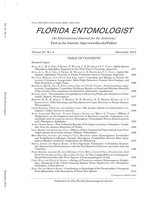Mutualism between ants and honeydew-producing hemipterans is a common phenomenon in ecosystems, and interactions between ants and hemipterans have been extensively studied. The invasive solenopsis mealybug, Phenacoccus solenopsis Tinsley (Hemiptera: Pseudococcidae), and the ghost ant, Tapinoma melanocephalum (F.) (Hymenoptera: Formicidae), are widely distributed in China. Previous studies showed that the ghost ant can promote the fitness of the invasive mealybug when natural enemies of the mealybug are excluded. In this study, we investigated the interactions between the ghost ant and the invasive solenopsis mealybug when the mealybug's natural enemies were included. Our results indicated that the honeydew produced by mealybugs facilitated colony growth of the ghost ant significantly more than by allowing them to feed on the mealworm, Tenebrio molitor L. (Coleoptera: Tenebrionidae). Tending by the ghost ant increased mealybug survival on the plants when six-spotted zigzag lady beetle larvae, Cheilomenes sexmaculata (Fabricius) (Coleoptera: Coccinellidae), were present. Both lady beetle adults and the mealybug parasitoid, Aenasius bambawalei Hayat (Hymenoptera: Encyrtidae), showed strong avoidance responses to ghost ants. The fecundity of lady beetle adults and the hatching rate of their eggs were significantly reduced by ghost ants. Also ghost ant tending appeared to negatively affect parasitoid performance. The number of mummified mealybugs on Hibiscus rosa-sinensis L. (Malvales: Malvaceae) in the presence of ghost ants was significantly less than the number without ants.
How to translate text using browser tools
1 December 2014
Interactions between Ghost Ants and Invasive Mealybugs: The Case of Tapinoma melanocephalum (Hymenoptera: Formicidae) and Phenacoccus solenopsis (Hemiptera: Pseudococcidae)
A. M. Zhou,
G. W. Liang,
L. Zeng,
Y. Y. Lu,
Y. J. Xu

Florida Entomologist
Vol. 97 • No. 4
December 2014
Vol. 97 • No. 4
December 2014
Aenasius bambawalei
ant-mealybug mutualism
Cheilomenes sexmaculata
colony growth
crecimiento de colonias
depredadores
mutualismo hormiga-cochinilla




